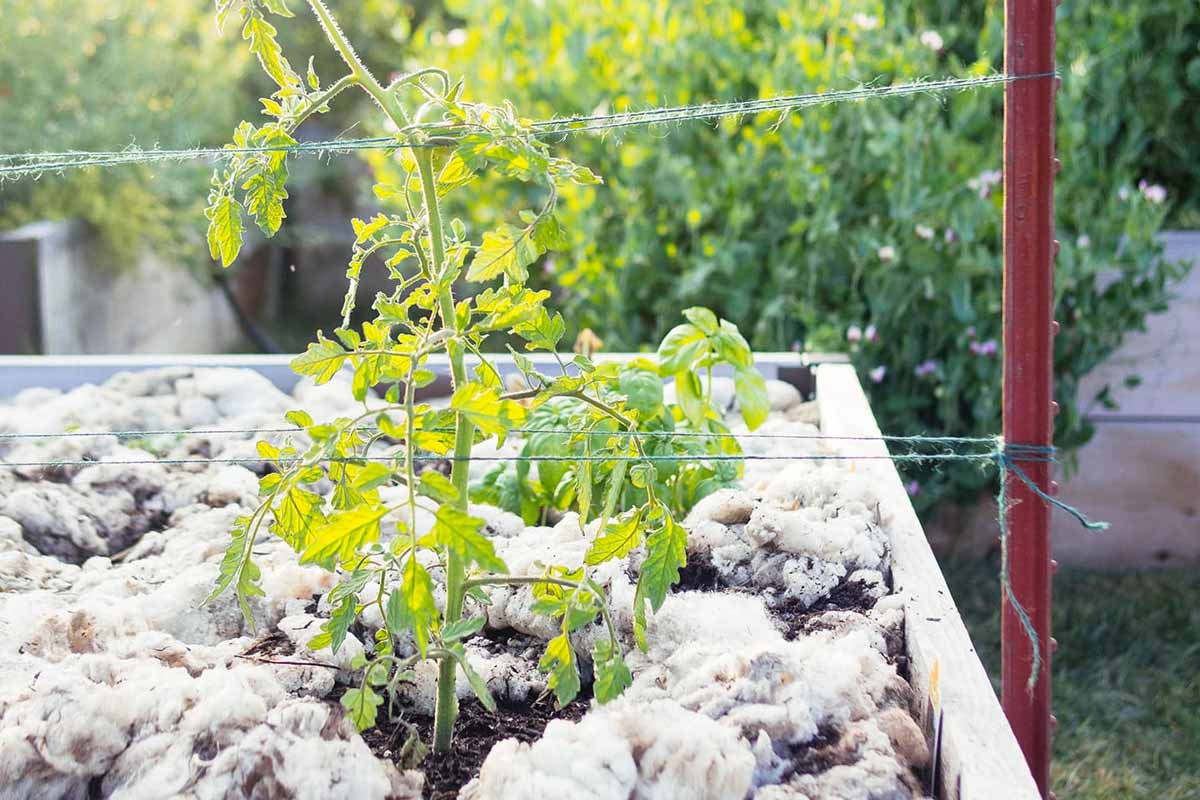A sturdy vine rewards care, and the homegrown tomato proves it every summer. Support keeps stems safe, fruit clean, and growth steady, so plants handle wind and rain without snapping. With simple tools and a clear plan, you can guide each plant, save time during the season, and still harvest baskets of ripe, sun-warmed gems.
Support Basics That Keep Vines Upright And Productive
Gardeners start with purpose, because structure shapes success. The tomato needs help to stand tall, carry heavy clusters, and avoid stem breakage. A trellis, a stake, or a row system all do the job, while smart spacing and gentle tie points reduce stress. Good support also keeps foliage off the soil, so splashing mud and pests cause less trouble.
Plants breathe better when leaves stay open to light, and clean airflow lowers disease pressure as fruit swells. Because fruit sits higher, you water the roots, not the clusters, and mulch stays tidy. Picking also improves, since hands reach inside without bending branches. Each choice here protects the plant while it grows.
Beginners often try wire cages for speed, and they can work with compact vines. Yet flimsy frames wobble in storms, so branches rub, bruise, and tangle. Short cylinders also crowd the canopy, which blocks air and sunlight. That weak mix can slow ripening, while wet leaves invite trouble.
How The Florida Weave Tames tomato Rows With Ease
The Florida weave uses two sturdy end stakes, then twine runs the lane, so stems rest between lines. Place poles at both row ends, because those anchors hold the load. The tomato plants sit in a straight line, and the first pass of twine “sandwiches” each stem, gentle yet firm.
You loop the string around the far stake, then weave back along the row. As plants stretch, you add new levels a bit higher, then snug each pass so branches stay supported. The basket-weave pattern shares weight across the row, while knots hold fast. The result feels simple, tidy, and strong.
Compared with a single stake per plant, this method saves materials and minutes. It also scales well, since one person handles long beds without fuss. Because twine touches stems lightly, leaves stay open, and flowers set well. Harvest stays smooth, as fruit shows clearly and hands slide between lines.
Why Airflow, Access, And Pruning Choices Matter Most
Clean air keeps leaves dry, so blotches spread slower and fruit skins stay sound. Here the tomato benefits from space between lines, because twine guides branches without squeezing. Sun reaches the center, then clusters ripen evenly. You also see pests sooner, so small issues stay small.
Cages can contain side branches, yet many are too short for vines that reach four to eight feet. Light frames tip, bend, and twist, while tight wires pinch growth. Dense rings trap humidity, so mildew lingers and fruit hides. Picking turns awkward, and bruises happen as hands fight the grid.
Pruning style matters, and it depends on goals. Growers who remove suckers want tall, tidy leaders; they choose strong stakes. Others prefer fuller plants, because sauce and canning types carry fruit on many laterals. For them, a woven row supports width and height together, while maintenance stays simple and repeatable.
When To Skip Cages And Train tomato Plants By Variety
According to gardening coach The Young Nonno (@theyoungnonno), the Florida weave shines with shorter, bushier types. These determinate lines push clusters along side shoots, and the tomato branches need gentle containment, not hard rings. Cherry and grape vines also fit well here, since light twine holds trusses without crushing stems.
The system begins with solid posts, such as bamboo stakes popularized by Martha Stewart. Drive one at each row end, then start twine at the first stake. Work the path forward and back, while keeping steady tension. As height increases, add levels at new heights, then keep fruit just inside the lines.
Because the weave contains width, row spacing stays efficient. Pathways remain open, so tools pass cleanly and watering hits only soil. Maintenance runs fast: tighten a slack loop, add a level, then move on. Plants look neat, and fruit stays visible, so harvest turns into a quick, daily walk.
Quick Setup Still Has A Place For Busy Growers
There is still value in simple wire frames when time runs short. A gardener presses one cage into the ground, then moves to the next, and the job ends fast. While not ideal for tall vines, a compact tomato can sit inside and finish the season without much extra work.
This “set and forget until harvest” style fits hectic weeks, because materials are easy to find and costs stay modest. The structure does corral outward shoots, so pathways stay clear. Light wind protection appears, and plants avoid ground contact. For small spaces, that convenience sometimes wins the day.
Even so, balance ease with plant health. Poor airflow can raise disease risk, while short frames fail as height builds. If a cage bows or tilts, stems rub and fruit scars. When that happens, swap to a woven row for better support, because it handles weight, weather, and growth together.
Why a flexible support wins season after season
Method choice starts with variety, spacing, and the care you plan to give. A woven row guides each tomato plant cleanly, while costs and labor stay low. Cages still suit quick setups, yet airflow, access, and height limits make them a compromise. Pick the system that matches your vines, then enjoy generous, steady harvests.
